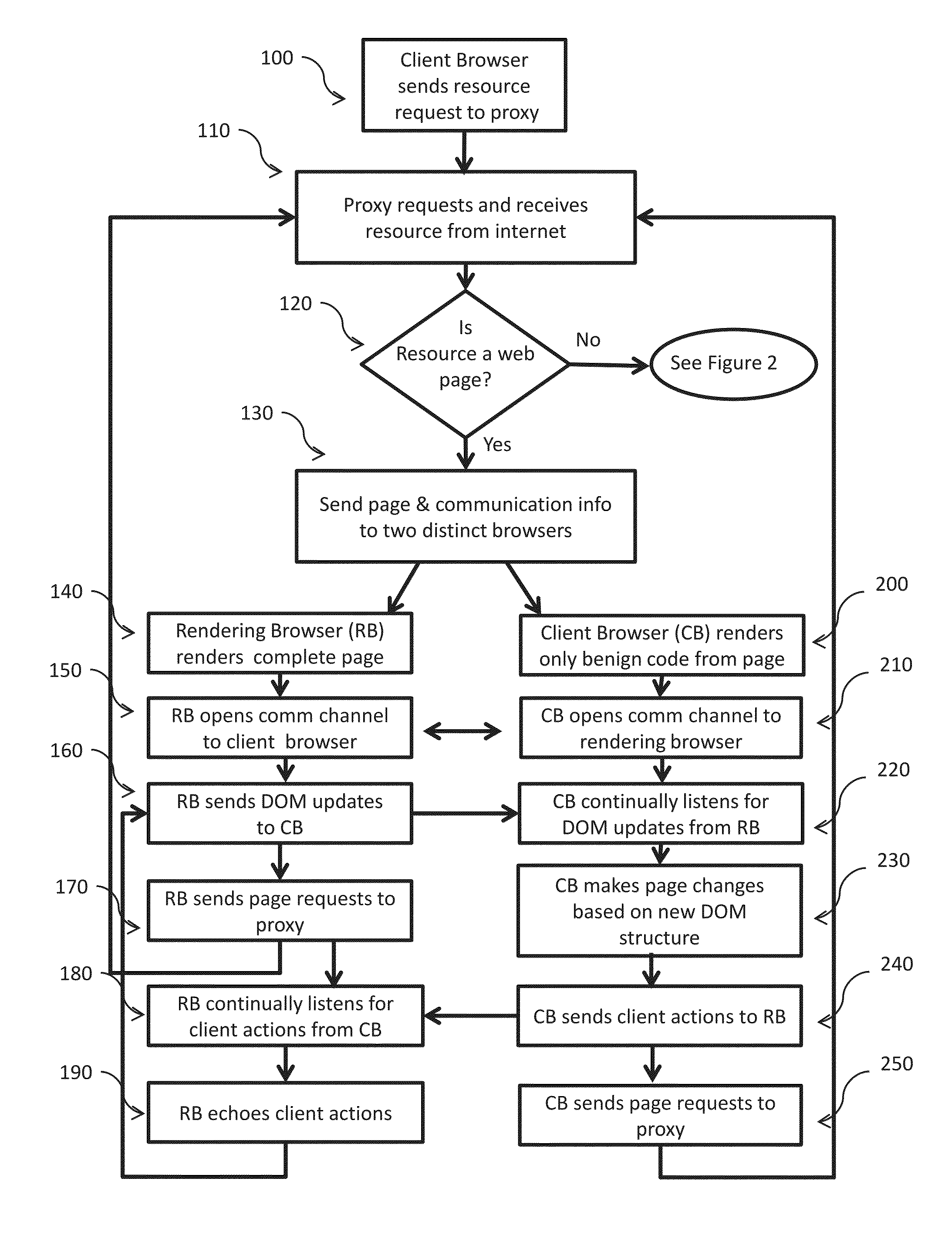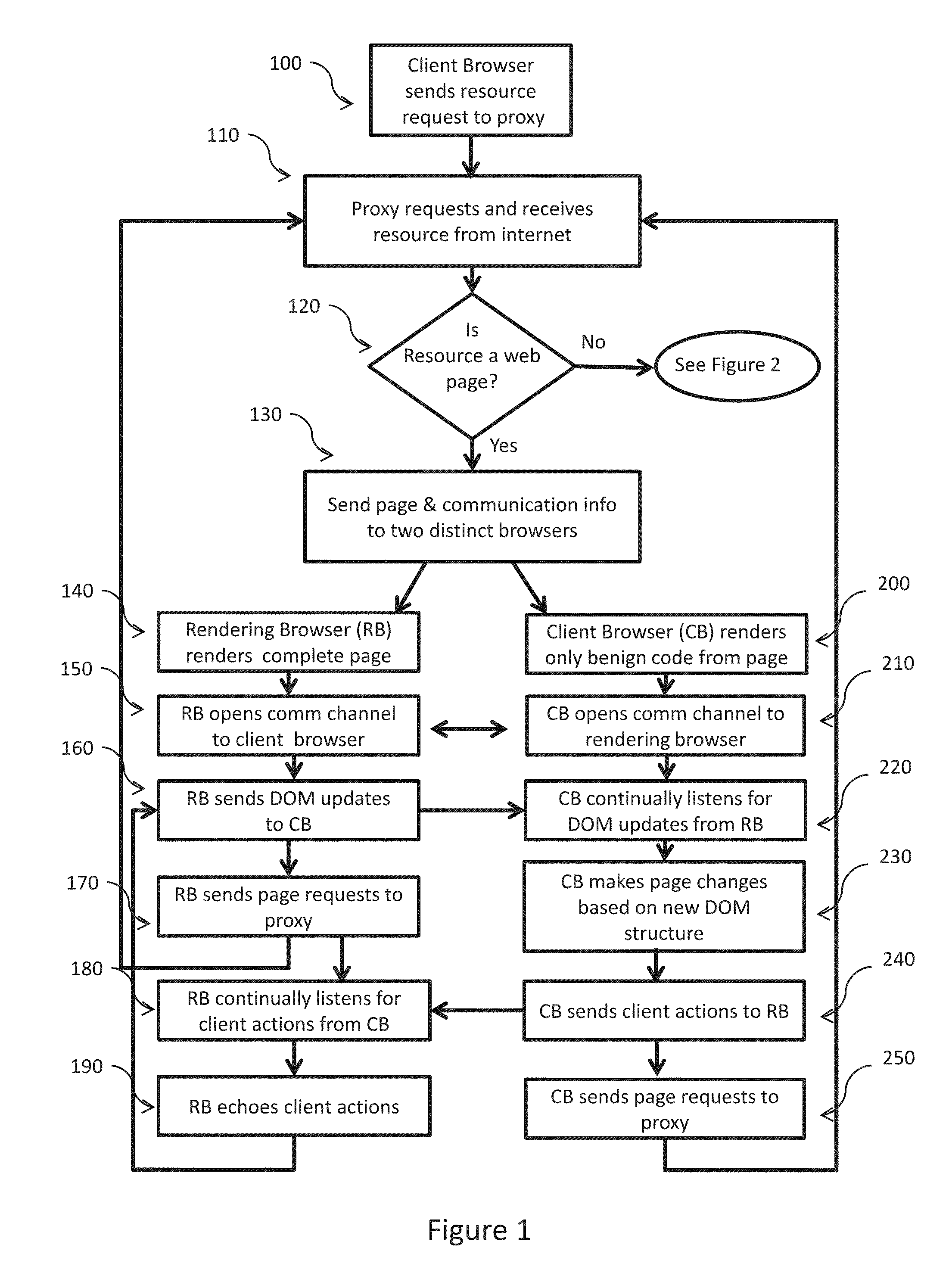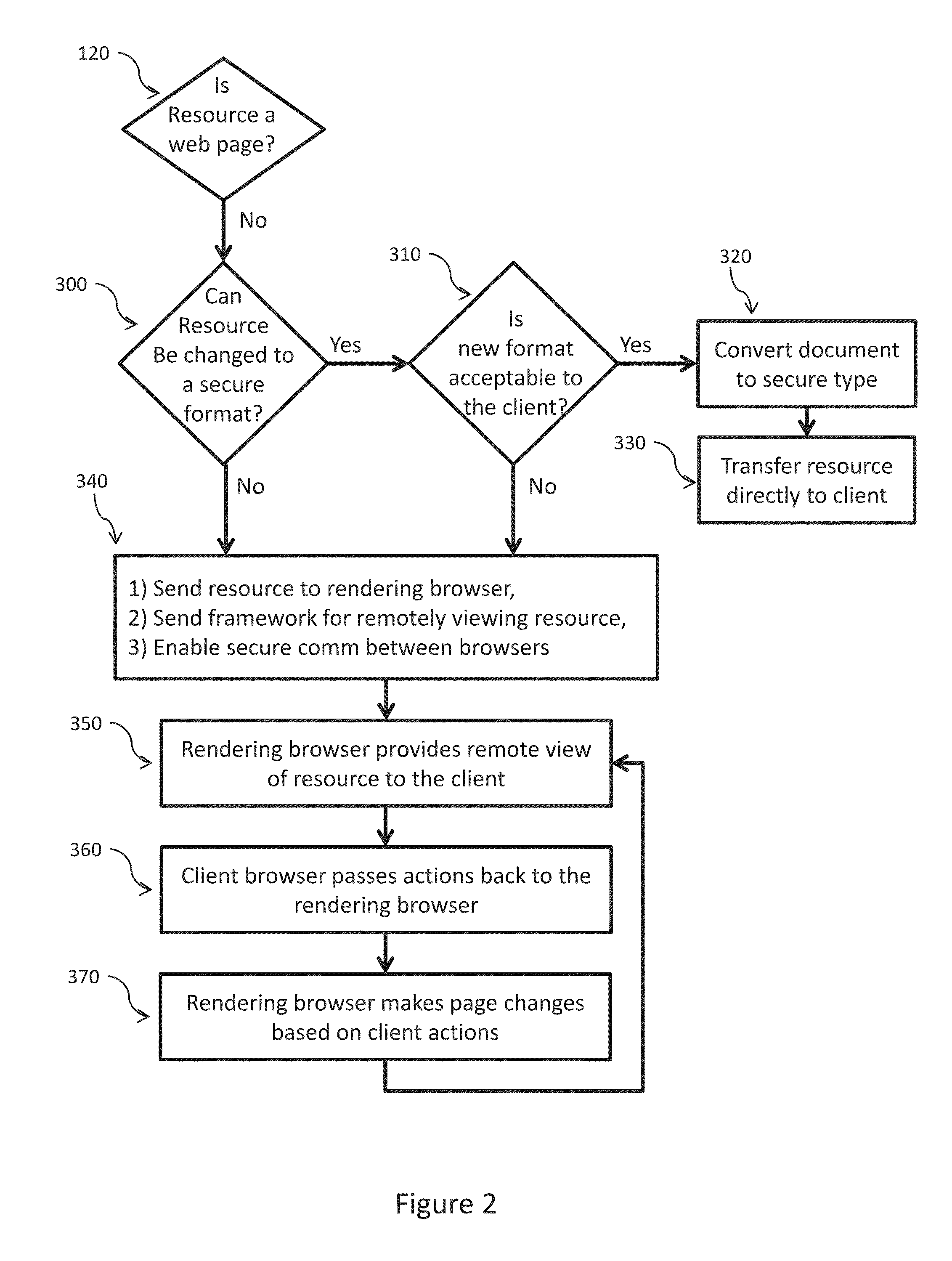Web malware blocking through parallel resource rendering
a technology of parallel resource rendering and malware, applied in the direction of unauthorized memory use protection, instruments, error detection/correction, etc., can solve the problems of inability to clean up, detect and disable malware that was already known to be in existence, and often fails signature analysis
- Summary
- Abstract
- Description
- Claims
- Application Information
AI Technical Summary
Benefits of technology
Problems solved by technology
Method used
Image
Examples
Embodiment Construction
[0021]The present invention safeguards access to resources on the internet against malicious code that accompanies many of those resources. In particular the present invention ensures that a user can safely access Web resources because no malicious code will be allowed to execute in the user's browser. The invention does not depend on the ability to identify malicious code in order to block it. The invention also restores much of the functionality that would be lost by disallowing the execution of any executable (potentially dangerous) code in the client browser. Lastly the invention will generally provide the client a version of the resource to view without the delay associated with prior art serial type systems that run security protection mechanisms prior to the client receiving the resource.
[0022]Simply explained, the core method the present invention uses to protect a user from malicious code involves using parallel rendering of the initial version of a Web resource—one browser...
PUM
 Login to View More
Login to View More Abstract
Description
Claims
Application Information
 Login to View More
Login to View More - R&D
- Intellectual Property
- Life Sciences
- Materials
- Tech Scout
- Unparalleled Data Quality
- Higher Quality Content
- 60% Fewer Hallucinations
Browse by: Latest US Patents, China's latest patents, Technical Efficacy Thesaurus, Application Domain, Technology Topic, Popular Technical Reports.
© 2025 PatSnap. All rights reserved.Legal|Privacy policy|Modern Slavery Act Transparency Statement|Sitemap|About US| Contact US: help@patsnap.com



